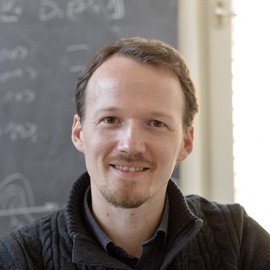Quantum simulating lattice gauge theories — How to make a quantum simulator obey Gauss’s law
Abstract
The difficulty of tackling the out-of-equilibrium dynamics of gauge theories on classical computers is spurring a worldwide effort to solve these problems on dedicated quantum simulator devices. In this talk, Philipp Hauke discusses recent progress towards quantum simulation of gauge theories. A particular focus lies on a central issue in this context: How to ensure that the quantum simulator fulfills the local symmetry that defines the gauge theory? In other words, how can one ensure that the ultracold atoms or superconducting qubits in a quantum simulator behave as electrons, positrons, and electric field, and mimic Gauss’s law of electrodynamics? Philipp presents a theoretical effort to quantify — and mitigate — the influence of microscopic violations of gauge symmetry [ 1] as well as the first quantum simulation experiment that measured the fulfillment of Gauss’s law [ 2]. Through these discussions, Philipp aims at outlining a roadmap towards mature and practically relevant quantum simulation of gauge theories.
[1] Jad C. Halimeh, Philipp Hauke, Reliability of lattice gauge theories, arXiv:2001.00024 [cond-mat.quant-gas] (2020), Staircase prethermalization and constrained dynamics in lattice gauge theories, arXiv:2004.07248 [cond-mat.quant-gas] (2020), Origin of staircase prethermalization in lattice gauge theories, arXiv:2004.07254 [cond-mat.str-el] (2020), Jad C. Halimeh, Robert Ott, Ian P. McCulloch, Bing Yang, Philipp Hauke, Robustness of gauge-invariant dynamics in ultracold-atom gauge theories, arXiv:2005.10249 [cond-mat.quant-gas].
[2] Bing Yang, Hui Sun, Robert Ott, Han-Yi Wang, Torsten V. Zache, Jad C. Halimeh, Zhen-Sheng Yuan, Philipp Hauke, Jian-Wei Pan, Observation of gauge invariance in a 71-site quantum simulator, arXiv:2003.08945 [cond-mat.quant-gas] (2020).
